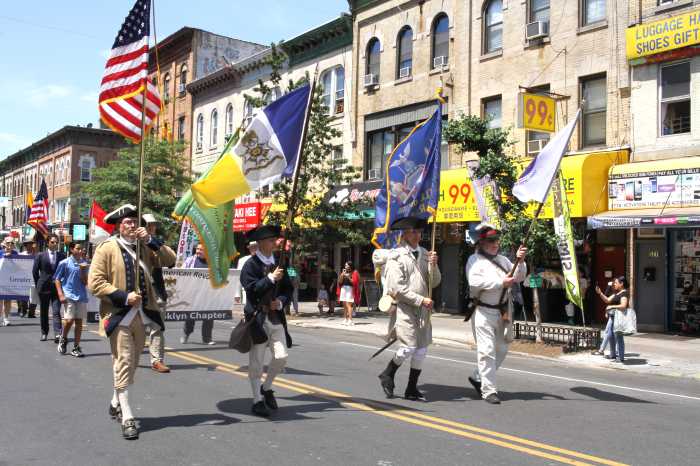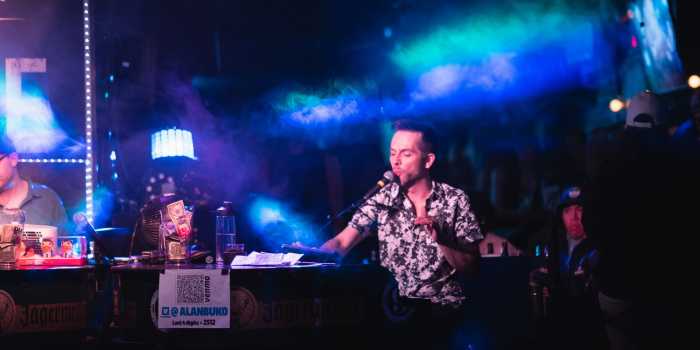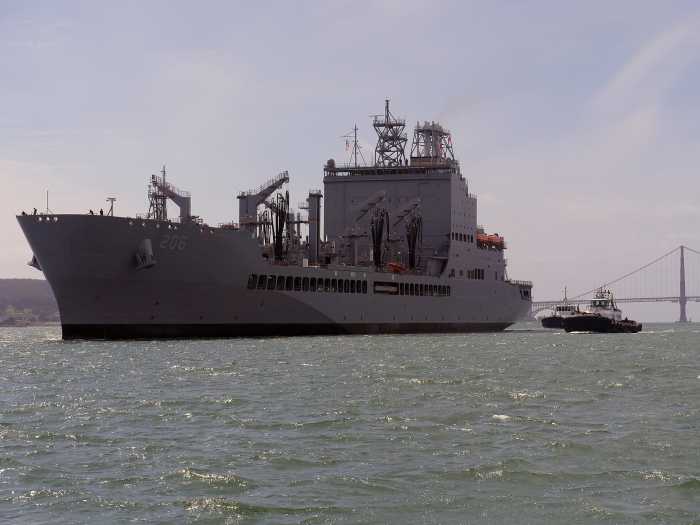Officials on Oct. 30 announced they will stop Brooklyn–Manhattan L-train service on April 27, 2019, to begin their 15-month repairs of the subway’s East River–spanning tube, roughly six and a half years after the infrastructure sustained significant damage during superstorm Sandy (“Final countdown: ‘L-pocalypse’ to begin April 27 of next year, MTA says” by Julianne Cuba, online Oct. 30).
The bi-borough L train will make its last run across the River on Fri. April 26, and the next day will begin its Brooklyn-only routes between Bedford Avenue station and Canarsie, forcing the roughly 250,000 who ride it to the outer borough daily to find other ways onto the distant isle until the second half of 2020.
Readers shared their concerns:
One of the biggest question marks about this shutdown is whether the streets will be flooded with inexperienced — and veteran — bike riders who can’t be bothered to obey traffic laws, ride at night without lights (while wearing black, of course, because they’re so cool), race along on sidewalks, and basically act like entitled a——- on two wheels. Yes, cars suck. And so do many, many, many of the bicyclists one encounters on a daily basis throughout NYC.
Benny from Park Slope
Just take alternate subway lines or use the buses. There are plenty of ways to getting around when you can’t use the L line itself. Some of you are just blowing this out of proportion. If you don’t know what other ways to get around, then just use a subway or bus map to plan your route for the time being. Also, take extra time so that it won’t be a factor when using said new route.Tal Barzilai
from Pleasantville, NY
I’ll be not surprised if there is 24-7, 365-day overcrowding on all of the subway lines that connects with the L train in some capacity during this shutdown. In addition, there’ll be overcrowding on the shuttle bus system between Brooklyn and Manhattan. It’s all hands on deck, that’s for sure.The Hunkster from Bed-Stuy
Mayor DeBlasio shot down Borough President Adams’s call for off-duty and retired police officers to bring their weapons to their houses of worship (“Showdown: Hizzoner butts head with beep over his call for armed off-duty cops in houses of worship” by Kevin Duggan, online Nov 2).
A DeBlasio spokeswoman told this paper that Hizzoner does not believe that having more firearms in places of worship will solve the problem, and that he trusts the city’s police department to keep congregants safe.
Borough President Adams called on off-duty and retired police officers to bring their weapons to their places of worship at a press conference in Midwood on Oct. 28, in response to a mass shooting that killed 11 worshippers and wounded several more at the Tree of Life synagogue in Pittsburgh on Oct. 27.
Our readers debated the issue:
Is there anyone dumber than DeBlasio in this city?
Homey from Crooklyn
I don’t always agree with the borough president, but at least he is suggesting that previously trained people and are licensed to carry weapons do so. I also agree that the NYPD is very good at evaluating threats, but not perfect.Frank from Furter
More guns do NOT make people safer! What a terrible suggestion. There are too many guns already. This will only make people more nervous and less safe.
Michael from Bay Ridge
I sometimes think Chirlaine grinds stupid pills into Duhblahsio’s morning protein shake. But I am too harsh. After all, he is the leader of a progressive movement — in his own mind. By contrast, Eric Adams lives in the real world and relates to people’s legitimate concerns. This practical suggestion happens anyway, as most off-duty cops always carry.
Mustache Pete
from Windsor Terrace
This is a terrible idea … and a way-out-of-proportion response. No cops in churches unless they are there to arrest child molesters.
Joey from Clinton Hills
Adams is right on; if you are a retired cop, active cop, or security professional, bring your gun into houses of worship and take care of problems when they arise. WTF does DeBlasio care? He has security.
Brooklyn from Bed-Stuy
What percentage of “retired cop(s), active cop(s) or security professional(s)” are Jewish?
Mathematician from Brooklyn
A Bensonhurst assemblyman blasted the Metropolitan Transportation Authority for spending more than $40 million to install countdown clocks and make other cosmetic changes to a subway station in his district instead of fixing chronic problems such as leaks and mold (“Train wreck: MTA’s million-dollar makeover of Kings Highway hub didn’t fix problems, pol says,” by Julianne McShane, online Nov. 5).
Assemblyman William Colton (D–Bensonhurst) accused leaders of the state-run agency of wasting money on unnecessary aesthetic enhancements that do nothing to solve the issues riders of the beleaguered subway system face every day at Gravesend’s Kings Highway station.
Readers gave their two-cents:
The MTA is still not going our own way, that’s for sure.
The Hunkster from Bed-Stuy
No money made in fixing leaks and nuisance problems. The money is being made and doing big-ticket item fixing. $40 million sounds about right.Bob from Gerritsen Beach
Happy birthday!
To the editor,
Happy 114th anniversary to the New York City subway system! On Oct. 27, 1904, the first subway line running nine miles from City Hall to 145th Street opened to the public. More than 150,000 riders payed a five-cent fare. The original BMT (Brooklyn Manhattan Rapid Transit — today’s B, D, J, M, N, Q, R, and Z lines) and IRT (Interboro Rapid Transit — 1, 2, 3, 4, 5, 6, 7, Franklin Avenue and Times Square shuttles) systems were constructed and managed by the private sector with no government operating subsidies. Financial viability was 100 percent dependent upon farebox revenues. They supported both development and economic growth of numerous neighborhoods in the boroughs of Manhattan, Brooklyn, Bronx, and Queens. As part of the franchise agreement which owners had to sign, City Hall had direct control over the fare structure. For a period of time, owners actually make a profit with a five-cent fare.
After two decades passed, the costs of salaries, maintenance, power, supplies, and equipment would pressure owners to ask City Hall for permission to raise the fares. This additional revenue was needed to keep up with maintaining a good state of repair, increase the frequency of service, purchase new subway cars, pay employee salary increases, and support planned system expansion. Politicians more interested in the next re-election (and subscribing to the old Roman philosophy of free bread and circuses) refused this request each year for well over a decade. As a result, in order to survive, owners of both systems began looking elsewhere to reduce costs and stay in business. They started curtailing basic maintenance, delayed purchases of new subway cars, postponed salary increases for employees, canceled any plans for system expansion, and cut corners to survive. (Does any of this sound familiar today?)
In 1932, the city began building and financing construction of the new IND (Independent Subway — today’s A, C, E, F, and G lines). This new municipal system subsidized by taxpayers dollars would provide direct competition to both the IRT and BMT. Municipal government forced them into economic ruin by denying them fare increases that would have provided access to additional badly needed revenues. Big Brother, just like the Godfather, eventually made them an offer they couldn’t refuse. The owners folded in 1940 and sold out to City Hall.
In 1953, the old NYC Board of Transportation passed on control of the municipal subway system, including all its assets, to the newly created NYC Transit Authority.
Larry Penner
Great Neck






















